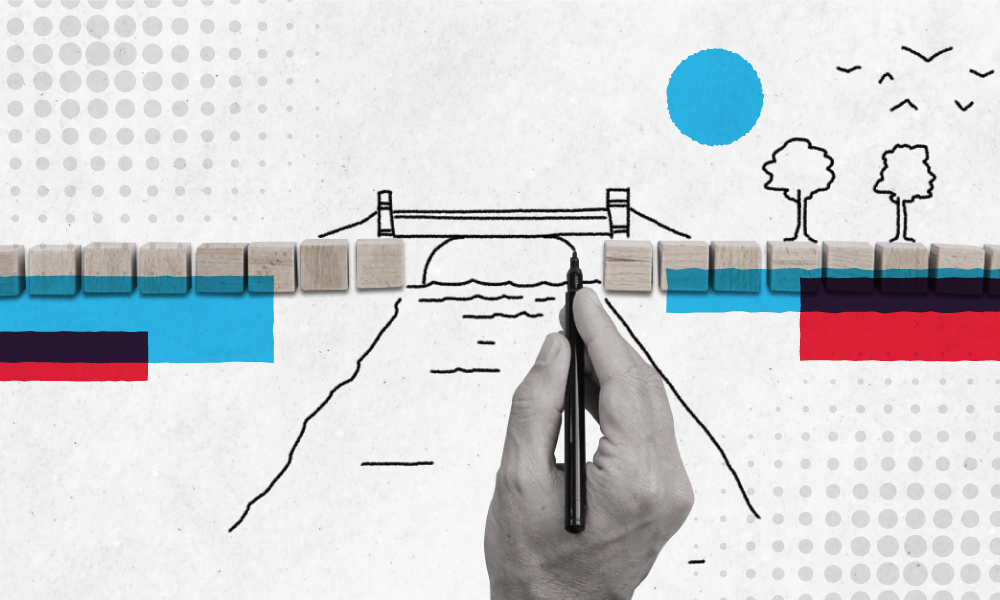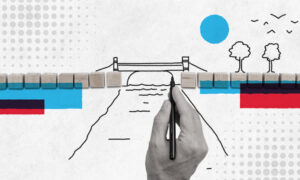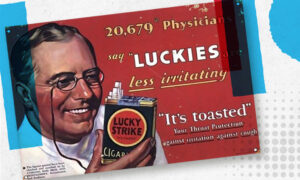Let’s start from the assumption that I am responsible for what I say but also, to some extent, for what you understand. In other words, communication is a parlour game that relies on collaboration and compliance, with rules that split responsibility down the middle. Drawn on paper, it would look like a bridge between two shores. It was Erri De Luca who pointed out to me that the Italian word for shore (“riva”) has the same root as “rivalry”. Consequently, he says, due to the power it has to unite, the bridge is the only truly civil, cordial architectural form.
Shortcuts? Best avoided
On a bridge there are no shortcuts. If you think we have taken one, perhaps in order to cross before others, you are unknowingly heading for a dead end. Months ago, digital entrepreneur Marco Montemagno posted a video disparaging the way girls use their own image on social media. I imagine that the avalanche of reactions that hit him must have brought most of Italy’s social media managers out in goosebumps. We have to be very careful about what we say and how we say it because in the digital age what you say at 14:00 has already been around the world by 14:05, returning to you locked and loaded. The result? The bridge collapses.
Standby mode ON
Shortcuts are the vast field of cognitive biases and heuristics. It appears to be carpeted with flowers, but in fact it’s strewn with mines. Put yourself in the shoes of your brain. In order to survive tens of thousands of decisions a day, it often goes into energy-saving mode, just like computers do. And when they do, they warn you: be aware that in this mode many operations will not be completed.
Heuristics are automated, impulse decisions. They are an asset but they have a drawback, which is called cognitive bias. There are many such biases, and they are well known to marketers. Testimonial advertising, for example, takes advantage of the bias called the halo effect to give credibility to Kevin Costner in the Rio Mare tuna commercial or Gianluigi Buffon in the shampoo one. But as early as the 1980s, the slogan that was used to advertise the Lancia Y10 – piace alla gente che piace, which translates roughly as “liked by people who are liked” – worked. And that’s all a slogan has to do. Nothing wrong with that, the message is effective, but behind it is the product – the Y10 was a big success.
Exercises in superficiality
Montemagno fell into the trap, like we all do every day. Social networks abound with eloquent victims of the peacock bias, who seem to be advertising themselves: wonderful lives, sensational successes, all hyper, super and mega. Mega as in megalomania. But the risk of bias isn’t buying a car you didn’t want.
Would you bet 50 euro in a service station on the three-card trick? You would be wary of charlatans, but you would play heads or tails with a friend because everything is out in the open, there’s no trick. If I said “let’s play heads or tails: heads I win, tails you lose,” you would play. And you would lose, because with a head I win, and with a tail you lose, and I even told you that up front.
Heuristics can deceive us. (I already know the rules of heads or tails so I don’t pay attention when you explain them to me.) Communication at any level, especially when it comes from people who want something from us, is a bridge that has only one meaning and one direction: from your shore to theirs.





